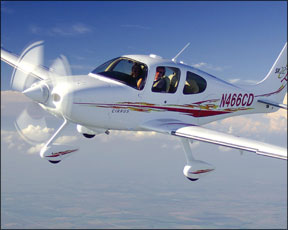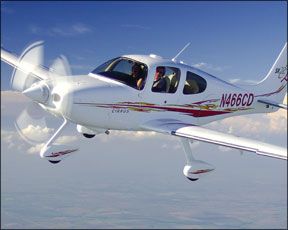Its no great secret that nearly all new-production aircraft now have glass cockpits and advanced devices such as weather data link. Even technologies such as synthetic vision have become the new norm. In a way, the term technically advanced aircraft (TAA) has become a misnomer but it is still widely recognized as a tag line for a variety of related issues- 288 including TAA training. A freshly released NTSB study (see the April and May, 2010, issues of Aviation Safety) alleges glass cockpits in general aviation airplanes have not led to expected safety improvements. The Board targets deficiencies in TAA training as one of the culprits. Their report recommended changes in airman knowledge tests and Federal Aviation Administration (FAA) training materials, among other changes. Unfortunately, neither the NTSB nor the FAA has recognized the real issues regarding TAA training. Fundamentally, the key to effective TAA training may not involve the glass at all but rather the proper use of higher-order pilot skills-especially risk management. A little recent history The TAA revolution really took hold in the early part of the last decade (2001-2005), and in the five years since then has matured. I served as the FAAs lead general aviation executive from 2001 until I retired in 2005. In that role, my office had ultimate responsibility for all general aviation training regulations and related doctrine, such as the Practical Test Standards and various training handbooks. One of the projects I took on was to bring the flight training paradigm into the 21st century. The result is the FAA Industry Training Standards (FITS) program. I envisioned FITS as an “outside-the-box” approach to addressing general aviation training issues. This approach favored cooperation between FAA and industry to change training doctrine, standards, and manuals without time consuming, inefficient and ineffective regulatory change. While I was in that role, I did not initiate controversial and counter-productive rulemaking initiatives involving training. I wanted to see quick results and I had high hopes major general aviation organizations would support this effort. The extent to which they failed to meet that objective is beyond the scope of this article. A little ancient history At this point, you would be correct to ask, “What exactly was wrong with the current general aviation training system?” The training doctrine and paradigm in place in 2001, and still mostly in place today, is a relic of the Civilian Pilot Training Program begun in the 1939-1941 period just prior to the war. Its maneuver-based, top-down (i.e., spoon-fed by the instructor) and has as its major goal getting a student through the knowledge and practical tests. Higher-order pilot skills, such as risk management, single-pilot resource management and automation management are either poorly considered or not addressed at all. Rather than using real-world scenarios for training and testing, the existing system is based more on rote knowledge acquisition and performing traditional training maneuvers. The cause of most fatals The FAA (before my watch) spent considerable time, effort, and money trying to analyze accident causality with a human factors approach. This effort tended to label accidents as either “skill-based” or “decision-based.” These studies tended to show most accidents were due to skill-based pilot errors. In my view, this analysis was flawed since it tended to accept the NTSB primary and causal accident factors as the root cause of the accident. For example, in a loss-of-control accident, the pilots inability to control the aircraft would often be considered a skill deficiency. The problem with this approach is that it did not fully consider the real root cause of the accident. For example, why did the pilot lose control? Could it be due to poor management of several risk factors affecting that flight-pressing into deteriorating weather, a known faulty gyro or a pilot in a hurry to get somewhere? It is my view that, fundamentally, most general aviation fatal accidents are risk-management accidents. The art and science of risk management is now a fundamental concept that permeates virtually all industrial processes from nuclear power plant management to-you guessed it-aviation safety. Even the FAA pays homage to the concept and frequently parrots it has a “risk-based” approach to safety oversight. Ill leave that one for a future article but its clear that managing risk is becoming the name of the game. What is risk management in the context of TAA training? The short version is it involves a three-part process to identify, assess and mitigate risk from specific hazards. Risk is defined by the simultaneous assessment of risk severity versus risk likelihood. Risk plays a key role in most general aviation fatal accidents. For example, while performing some work for one of my post-retirement clients, I evaluated 29 TAA fatal accidents and applied a simple test. Could the accident have been prevented if the pilot had conducted effective risk management by identifying, assessing and mitigating hazards using simple and common techniques? I concluded that 25 of the accidents had a high likelihood of being prevented by using such techniques and only four accidents were really skill-related. What about the other higher order pilot skills such as automation management and single-pilot resource management? They are indeed crucial components of effective TAA training but todays TAA training market tends to emphasize automation management as the be-all and end-all to the training requirement. There are many excellent automation texts, training courses and providers out there but the success of these products alone is not sufficient to reduce the higher TAA accident rate documented in the recent NTSB study. The NTSB itself does not help the situation by emphasizing more of the same as the solution. Before the hate mail gets out of control, let me emphasize that I still recognize the importance of “traditional” pilot skills, as long as they are part of a balanced program. Its just that they need to be empirically justified by how effective they are in preventing accidents while simultaneously addressing utility in practical flight operations. Our flawed training system The fact were still using training concepts from the last century is a result of many factors and, while its easy to blame the FAA, we might only have to look in the mirror to find part of the problem. That the industry is clinging to these concepts may be as much due to culture as to bureaucratic ineptitude. I have a good friend who is a general aviation industry executive. He attributed much of general aviations failure to embrace modernization and change as a result of the overarching influence of what he terms, “romantic, elitist, macho enthusiasts.” Being an ex-FAA type, I immediately created the acronym REME to describe these folks. All kidding aside (this could really ratchet up my hate mail), it could be that a diminishing cohort of old white guys, and the trade and member organizations that represent them, are preventing progress. On the other side of the fence are elements that want to change the status quo and not just with better training. For example, Cirrus is an example of a new breed of manufacturer wanting a clean break with this image. Commendably, it has succeeded-at least partly-in expanding the market by building products with appeal to a wider audience. The typical Cirrus customer doesnt go to the airport to get REMEd out but rather goes there so he can use his airplane to get somewhere. Really, isnt this why current and future customers spend $600,000 and up for a sophisticated traveling machine? The current student pilot start figures ought to be sobering to anyone in general aviation who is willing to admit that weve got to stop selling to ourselves if we are to survive and that $150,000 “sport aircraft” may not be the answer. But I digress. A perfect laboratory, but… After leaving the FAA, Eclipse Aviation offered me the job of Director of Customer Flight Training. I just couldnt resist the opportunity to try and create a product that embraced all of the training concepts that I had been advocating. I immediately got to work creating a FITS-based program that would emphasize operating the Eclipse 500 single-pilot in the real world. It would detract too much from the subject of this article to discuss any of the well-known issues that Eclipse critics have harped on, so youll just have to settle for my training soapbox. I was intent on creating a scenario-based training program, covering all the well-known elements of the Eclipse program, including initial type training and mentoring. My hard-working colleagues and I created a program that we thought the FAA would love. It heavily emphasized risk management and single-pilot resource management. I personally created and often taught the risk management segment. Our program quickly obtained FITS “acceptance” from Washington and we thought we were on our way. From the beginning, our local FSDO folks were also hard-working but, in their eyes, the FITS concepts really didnt matter. The only thing their guidance material emphasized was compliance with the Airline Transport Pilot and Type Rating Practical Test Standard (PTS). It was, and still is, a maneuvers-based test. To get a type rating, all you have to do is stay within the test parameters. You can be type-rated to carry passengers at FL410 without ever getting above 10,000 feet. None of the “real-world” issues mattered-sweating fuel during an unexpected hold, dealing with practical risk-management issues, coping with descents into busy terminal areas. To ensure our customers could pass the practical test, I and my successors at Eclipse quickly moved the higher order pilot training to the mentoring phase, which is not required by the regulations if you conduct all of the training in the airplane itself, rather than a simulator. I left Eclipse in February 2008, thus avoiding the companys final denouement when it came a year later. As I often say, I was on the first lifeboat out-ahead of the women and children. Where do we go from here? As I said earlier, it would be simple but inaccurate to blame FAA totally for deficiencies in TAA training. Im happy to report that many of the changes that I initiated have finally taken place-10 years later. It is a mixed bag, however. The FAA has revised many of the training handbooks, such as the Instrument Flying Handbook, to address TAA issues and has issued completely new manuals, such as the Risk Management Handbook. Yet, the knowledge test questions have only been partly updated to reflect the new doctrine and FAA has scarcely paid any attention to wholesale curriculum redesign, a change that would require active industry support. Most of FAAs training emphasis is on airline training, especially after the Colgan Buffalo accident. Considerable progress also has occurred in the training community. Many small training entities and some individual instructors have embraced TAA training. Also, Middle Tennessee State University did some pioneering work with a combined private-instrument rating curriculum-with a single test-and the regulations have been changed to enable that option. I believe the energy for continued evolution in training methods must originate with industry and be supported by continued FAA doctrine changes and especially reform of the knowledge and practical tests. The flight instructor community could be effective in this regard, if it could speak with a unified voice. The informed consumer is probably the best agent for training change. If you own or fly a TAA, its time to speak up and help us move beyond the white-scarf era. In addition to his 22 years of FAA service, Bob Wright has 9000-plus hours of flight experience and four turbojet type ratings on his ATP certificate. His views are solely those of the author and not necessarily of any client he represents.




